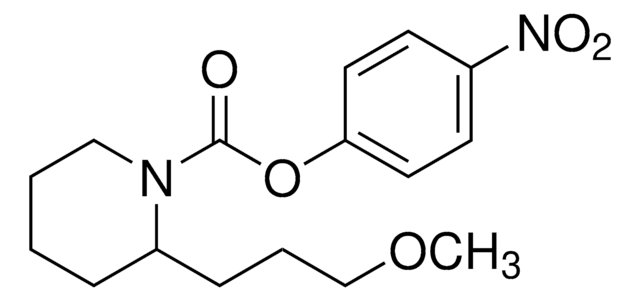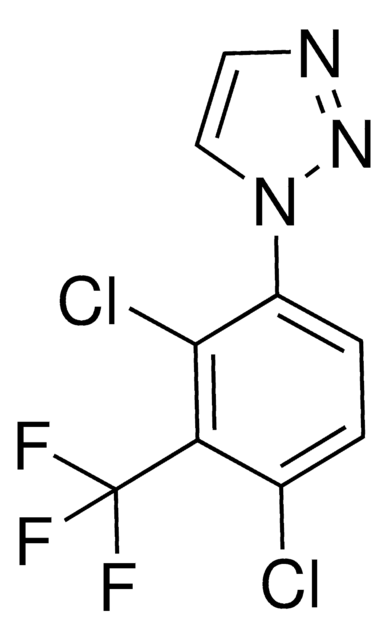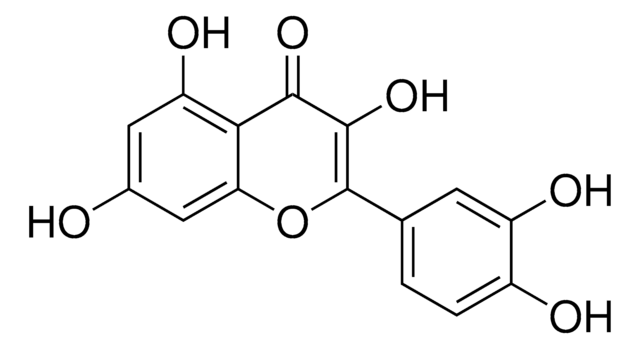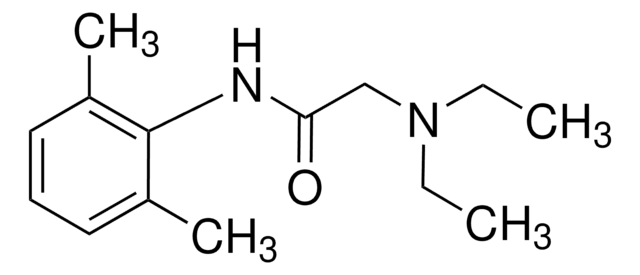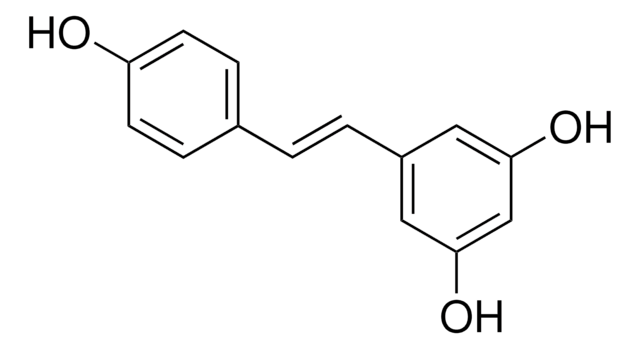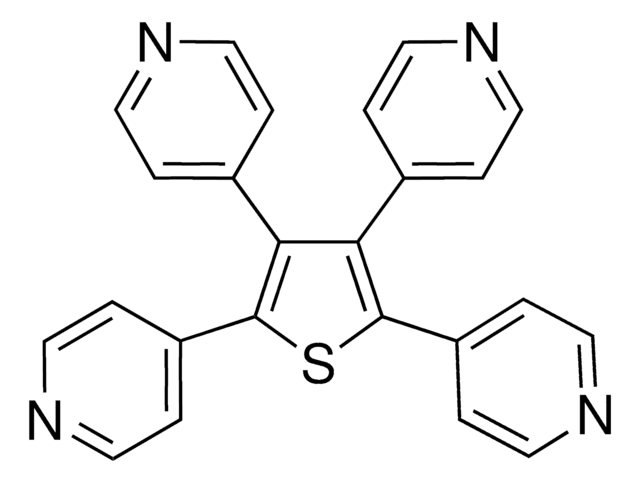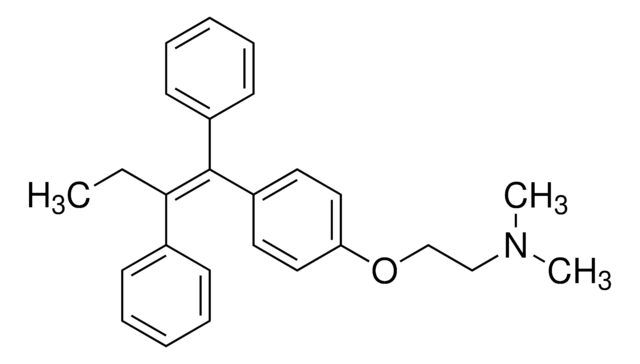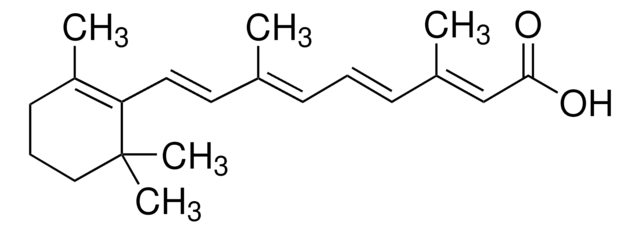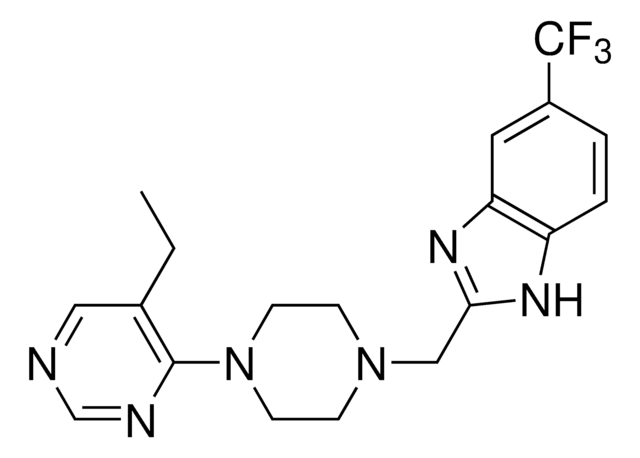推荐产品
质量水平
方案
≥98% (HPLC)
表单
powder
颜色
white to beige
溶解性
DMSO: 10 mg/mL, clear
储存温度
2-8°C
SMILES字符串
CCOC(C(C=C1)=CC=C1C(C=C2)=CC=C2OC(N(C)CC3=CC(C4=CC=NC=C4)=CC=C3)=O)=O
InChI
1S/C29H26N2O4/c1-3-34-28(32)25-9-7-22(8-10-25)23-11-13-27(14-12-23)35-29(33)31(2)20-21-5-4-6-26(19-21)24-15-17-30-18-16-24/h4-19H,3,20H2,1-2H3
InChI key
AKIIPHDGVCFVCC-UHFFFAOYSA-N
生化/生理作用
WWL113 is an inhibitor of mouse Carboxylesterase 3 (Ces3) and human CES1 (orthologue of mCes3), serine hydrolases involved in lipolysis in addition to their activities as liver detoxification enzymes. In a recent study, hCES1 activity was found to be increased two-fold in obese individuals and patients with type 2 diabetes compared to lean subjects, and is thought to generate surplus fatty acids that can deposit ectopically in tissues. WWL113 treatment resulted in major improvement of multiple features of metabolic syndrome and ameliorated obesity-diabetes in mice with lowered levels of nonesterified free fatty acids (NEFAs), triglycerides (TGs), total cholesterol and fasted glucose as well as enhanced glucose tolerance after three weeks of treatment. WWL113 inhibits Ces3 with an IC50 of 120 nM and also the closely related Ces1f with an IC50 of 100 nM. WWL113 inhibits mouse recombinant Ces1, Ces1c, and Abhd6 at 10 μM.
WWL113 is an inhibitor of mouse Carboxylesterase 3 (Ces3) and human CES1 (orthologue of mCes3).
储存分类代码
11 - Combustible Solids
WGK
WGK 3
闪点(°F)
Not applicable
闪点(°C)
Not applicable
历史批次信息供参考:
Roxana Filip et al.
Cell chemical biology, 28(2), 202-212 (2021-01-16)
MicroRNAs (miRNAs) act as cellular signal transducers through repression of protein translation. Elucidating targets using bioinformatics and traditional quantitation methods is often insufficient to uncover global miRNA function. Herein, alteration of protein function caused by miRNA-185 (miR-185), an immunometabolic miRNA
相关内容
The Cravatt group develops innovative technologies to understand enzyme roles in disease, focusing on activity-based protein profiling.
我们的科学家团队拥有各种研究领域经验,包括生命科学、材料科学、化学合成、色谱、分析及许多其他领域.
联系技术服务部门